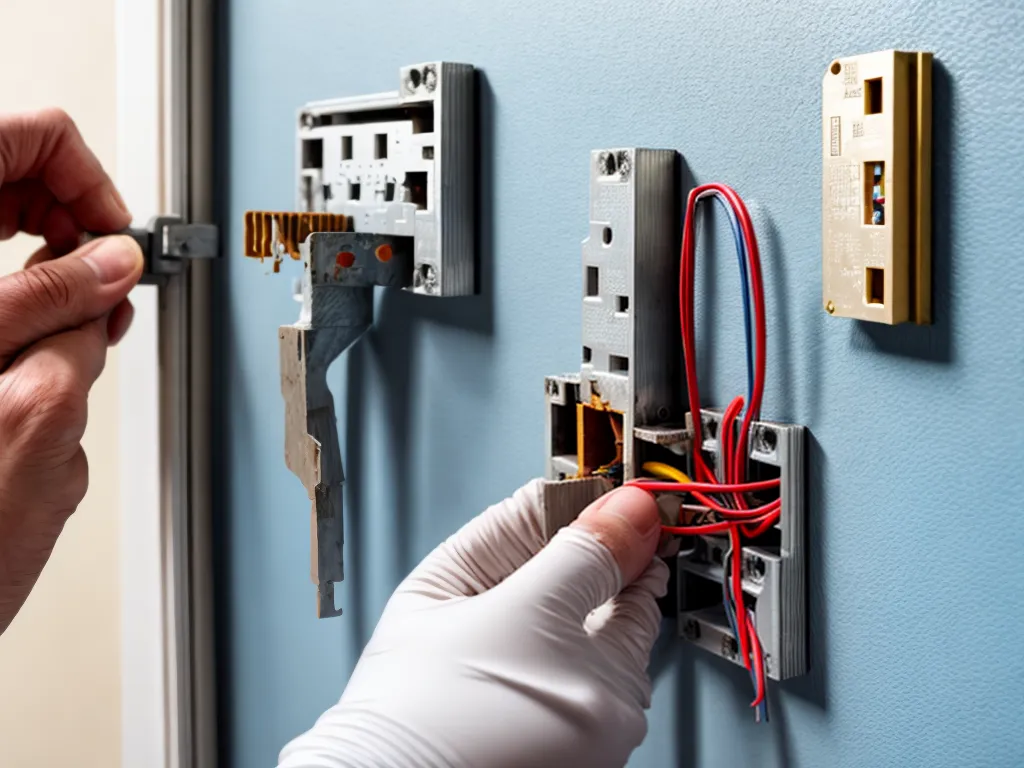
How to Use Aluminum Wiring Safely in Older Homes
Introduction
Aluminum wiring became popular in American homes built between 1965 and 1973 because it was less expensive than copper wiring. However, aluminum wiring has been linked to certain fire hazards if not properly installed and maintained. As the owner of a home with aluminum wiring, you can take steps to use it safely. This article provides an in-depth look at aluminum wiring and how to use it safely in older homes.
What Is Aluminum Wiring?
Aluminum wiring consists of pure aluminum or an aluminum alloy rather than copper. It was used for both 120-volt and 240-volt circuits during the 1960s and 1970s.
Key characteristics of aluminum wiring:
- Less expensive than copper wiring
- Lighter weight than copper
- More likely to lose conductivity and overheat if connections become loose over time
Aluminum wiring is identified by the color and words printed on the outer plastic insulating jacket:
- 120-volt circuits: black insulation labeled "Aluminum" or "Al"
- 240-volt circuits: orange insulation labeled "Aluminum" or "Al"
Potential Hazards of Aluminum Wiring
The potential fire hazards associated with aluminum wiring occur due to:
- Loose connections - Aluminum expands and contracts more than copper. Over time, connections can loosen. Loose connections cause wires to overheat, which can start fires.
- Oxidation - Aluminum oxidizes faster than copper. The accumulation of oxidized aluminum at connections can increase resistance and overheating.
Other factors that increase fire risks with aluminum wiring:
- Incorrectly sized breakers, fuses, outlets, or switches
- High-wattage appliances and lighting on aluminum circuits
- Poor workmanship during original installation
Inspecting for Aluminum Wiring
To use aluminum wiring safely, the first step is to inspect your home to verify if aluminum wiring was used.
Warning signs your home may have aluminum wiring:
- Home was built between 1965-1973
- Black or orange wiring with "Al" or "Aluminum" printed on insulation
- Outlets feel hot to the touch
- Flickering lights or dimming lights when appliances turn on
- Fuses blowing or breakers tripping frequently
Thoroughly inspect the electrical panel, outlets, switches, and light fixtures. Use a flashlight to better see the writing printed on wire insulation. Pay special attention to areas where appliances pull a lot of electricity like the kitchen, laundry room, and garage.
If your home has combination wiring (some copper and some aluminum), be sure to identify which circuits have aluminum wiring. This will help you focus mitigation efforts on the aluminum wiring only.
Mitigating Aluminum Wiring Hazards
If your home inspection confirms aluminum wiring, several steps can be taken to mitigate fire hazards:
1. Hire an Electrician
Professionally replacing aluminum wiring with copper wiring is the best solution, but also the most expensive. If this isn't feasible, hire a qualified electrician to inspect all connections and perform the following mitigation techniques. Improper work could make hazards worse, so always use a licensed electrician experienced with aluminum wiring.
2. Repair Loose Connections
The electrician should tighten any loose connections and outlet or switch screws/terminals. Special care must be taken to not overtighten and damage wires. A special antioxidant grease or lubricant should be used on aluminum wire terminations to prevent future loosening.
3. Pigtailing
Aluminum wires can be attached to short lengths of copper wire called "pigtails" using special connectors. The pigtails are connected to outlets and switches. This prevents direct contact between the aluminum wire and the device's copper screw terminals.
4. Replace Outlets and Switches
Standard outlets and switches are incompatible with aluminum wiring. The electrician should replace old outlets and switches with models labeled "CO/ALR". These are designed to safely work with aluminum wiring.
5. Circuit Breaker Upgrades
Standard circuit breakers may be improperly rated for aluminum wiring. A qualified electrician should evaluate and potentially replace breakers with appropriate models.
Ongoing Maintenance and Monitoring
Proper maintenance and monitoring is crucial for continued safe operation after mitigating aluminum wiring hazards in your home.
-
Annually: Have an electrician check wiring connections and terminations to catch any new loose connections before they become a fire hazard.
-
Monthly: Check outlets and switches for signs of overheating like discolored or warm-to-the-touch devices. Report any issues immediately.
-
When remodeling or replacing appliances: Hire an electrician to evaluate wiring and compatibility with aluminum circuits. Upgrades may be needed.
-
Before buying a home with aluminum wiring: Hire an electrician to thoroughly inspect all wiring and provide cost estimates for any needed mitigation.
Is Aluminum Wiring Always Unsafe?
While aluminum wiring does present fire hazards if not properly addressed, the risks can be greatly reduced by following proper safety practices. Homeowners should not panic if they discover they have aluminum wiring, but rather take prudent steps to use it safely. With the right precautions and maintenance, aluminum wiring can be used safely in older homes.